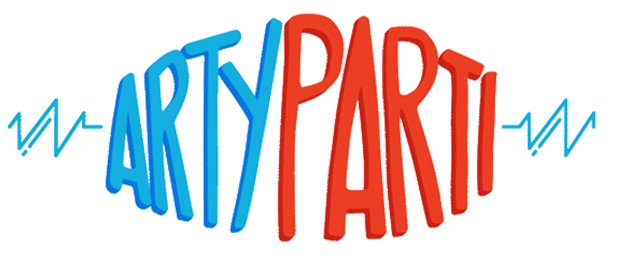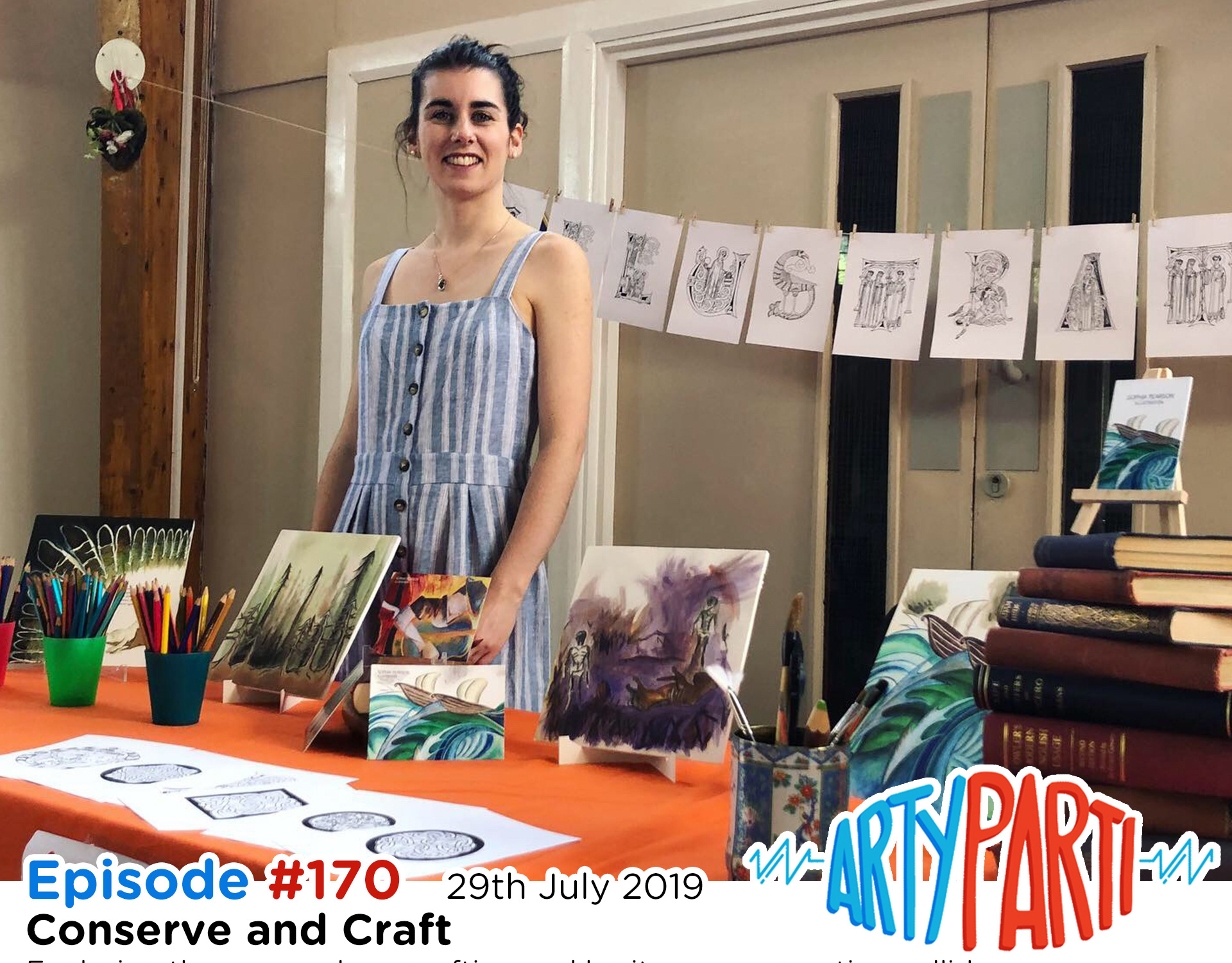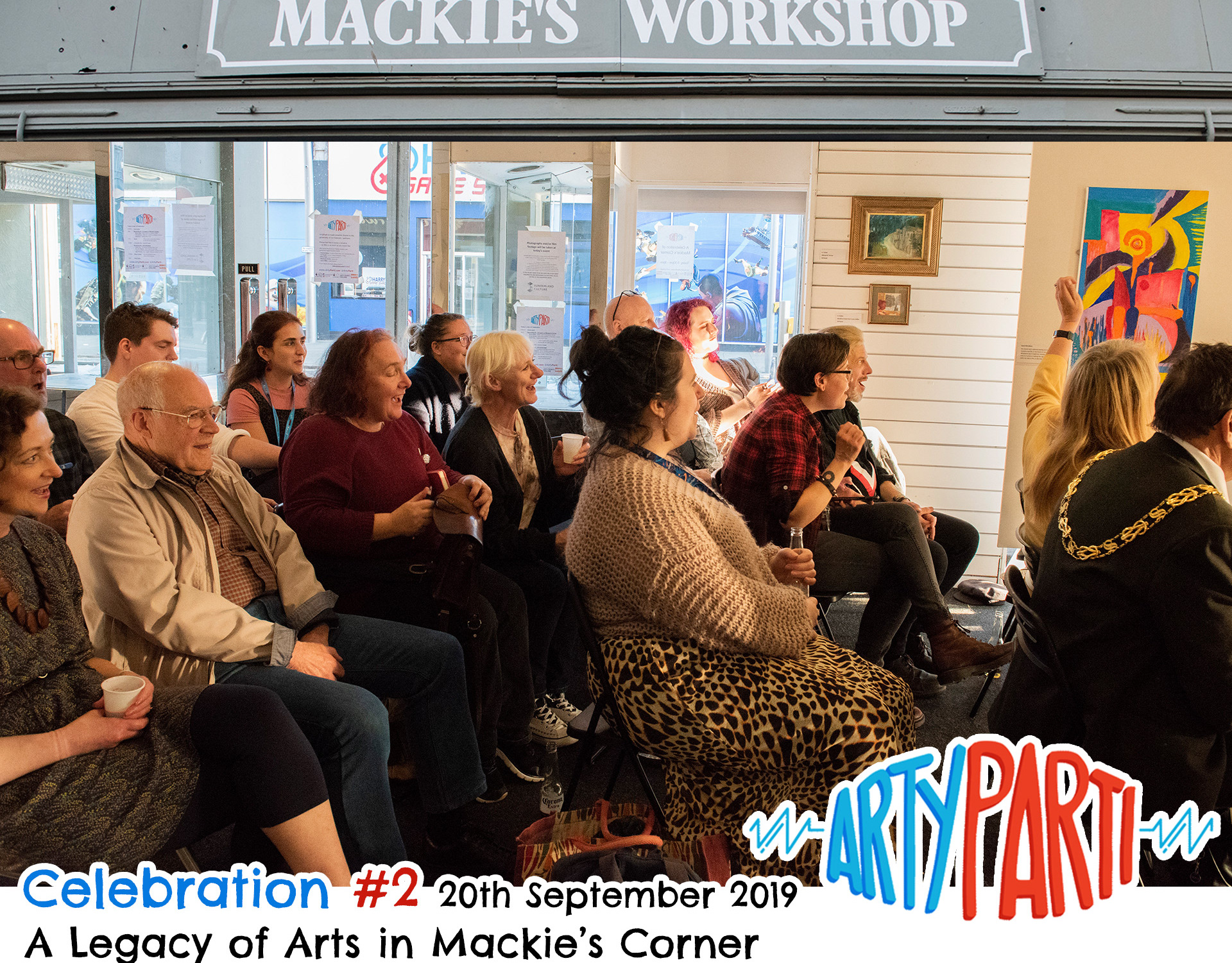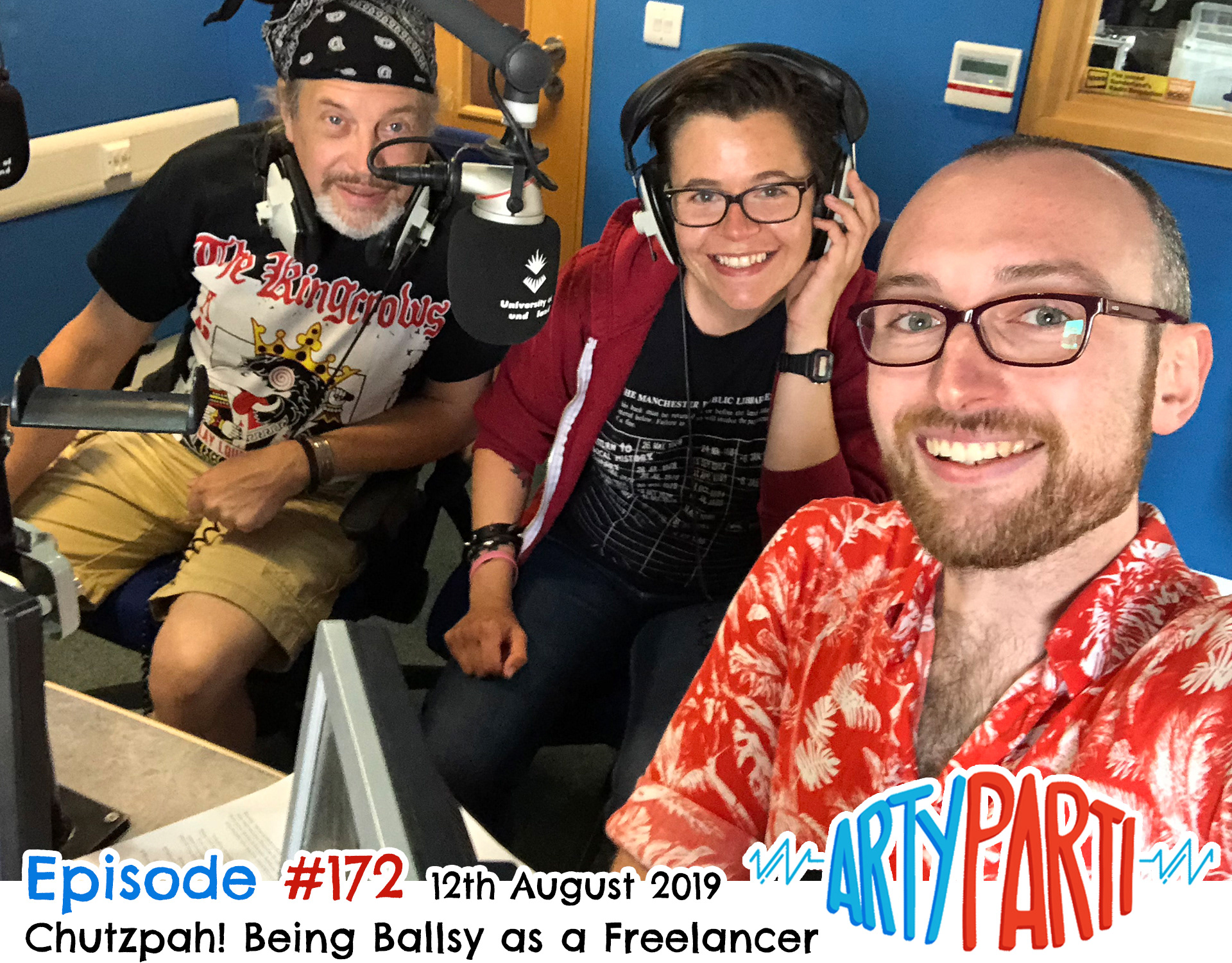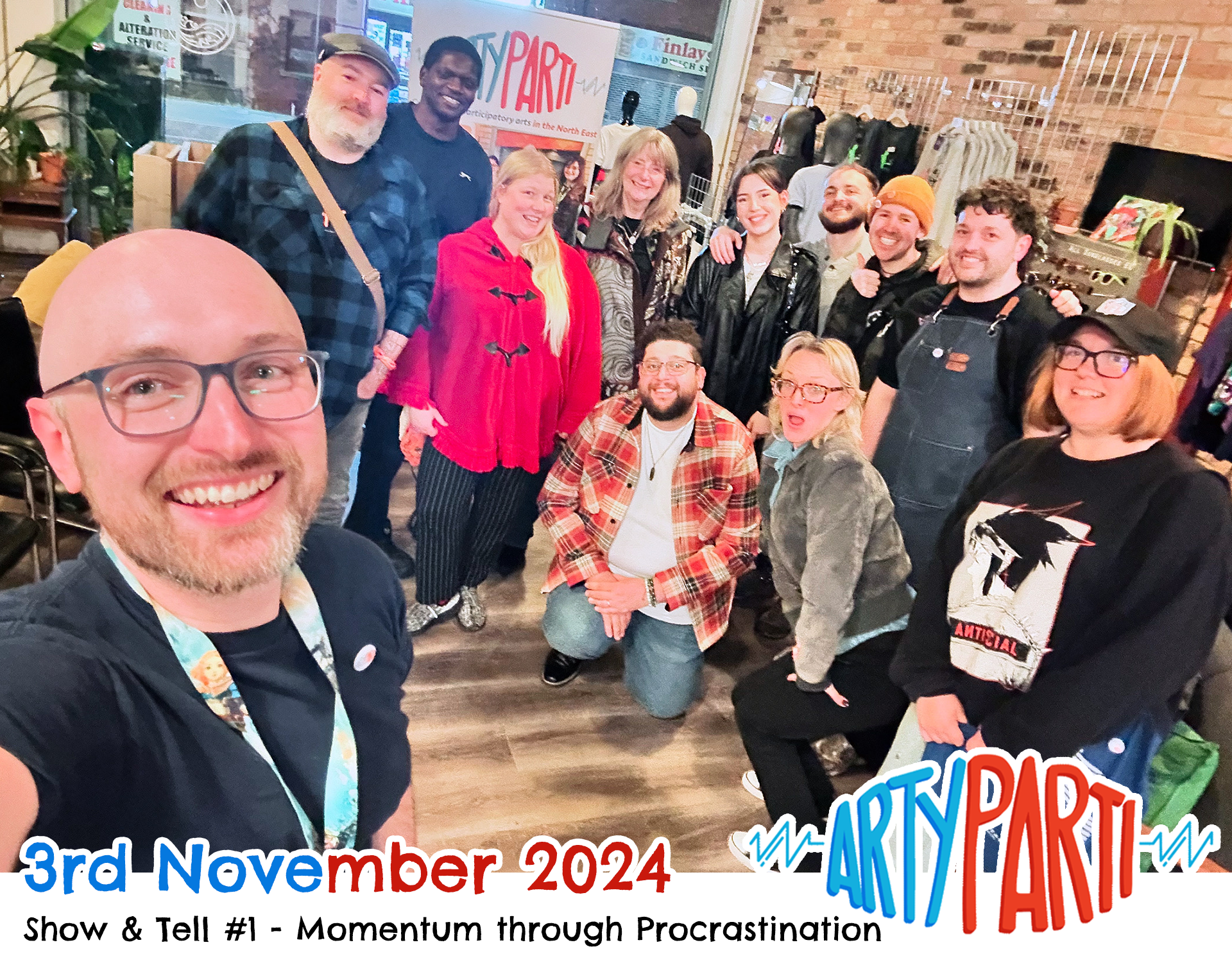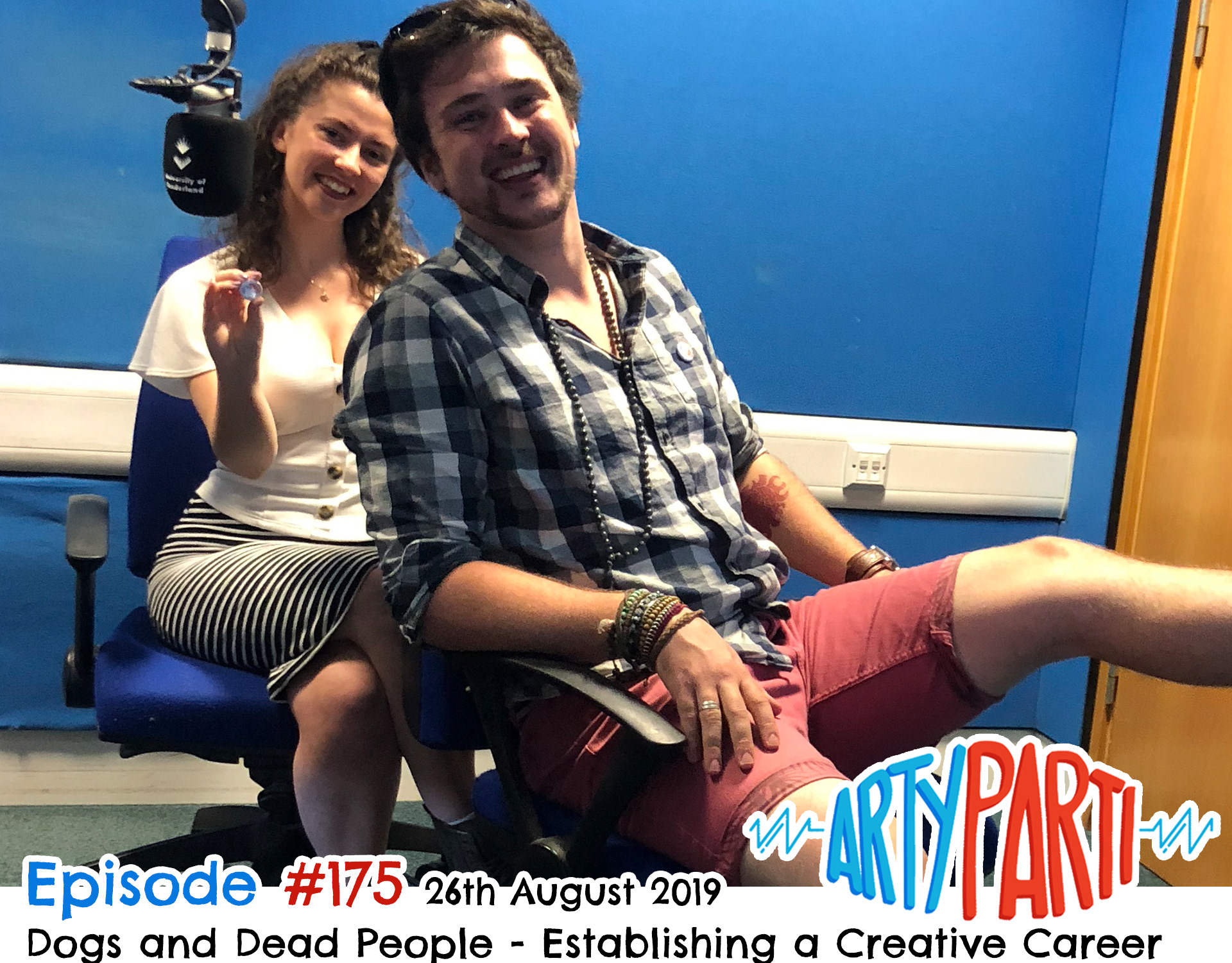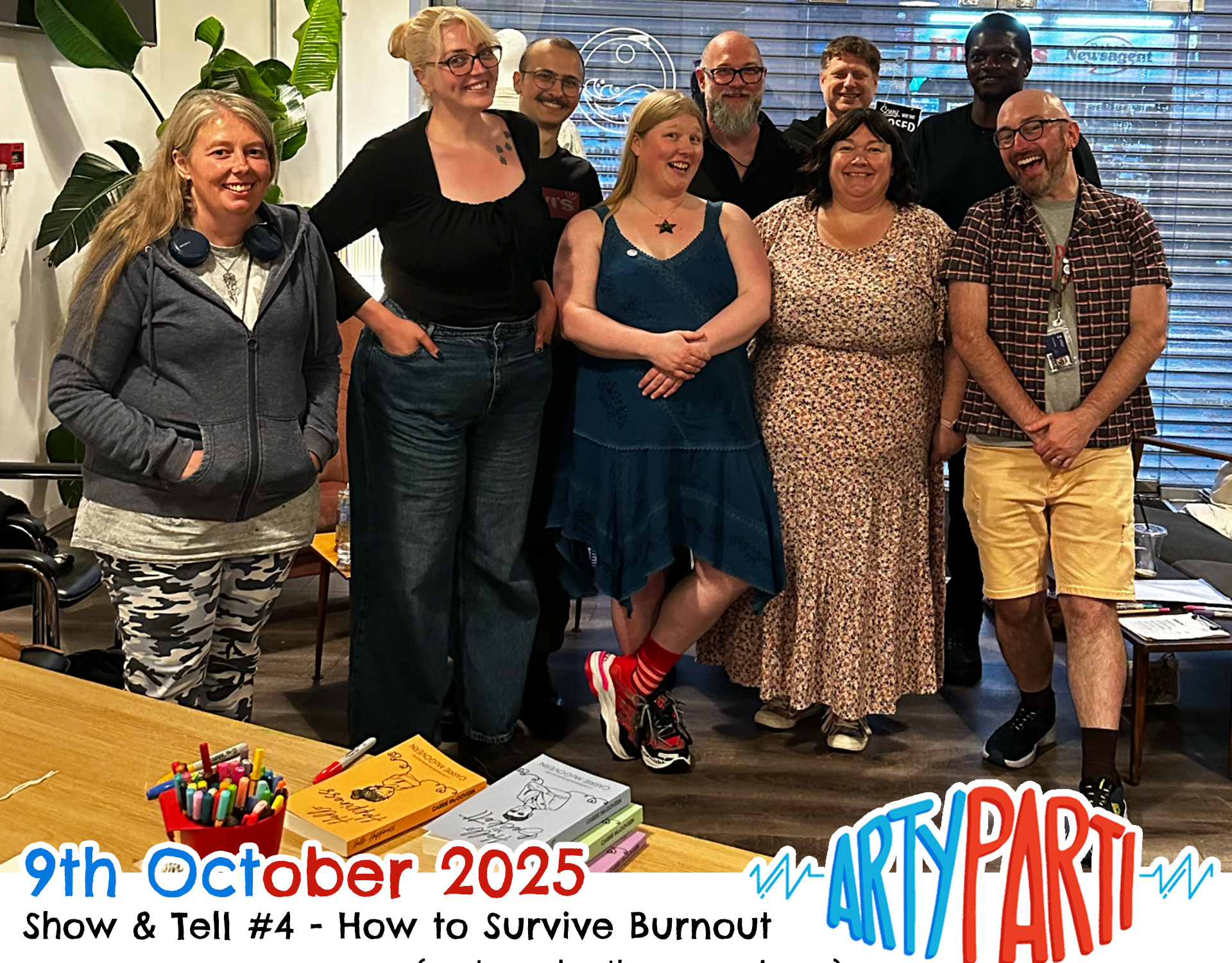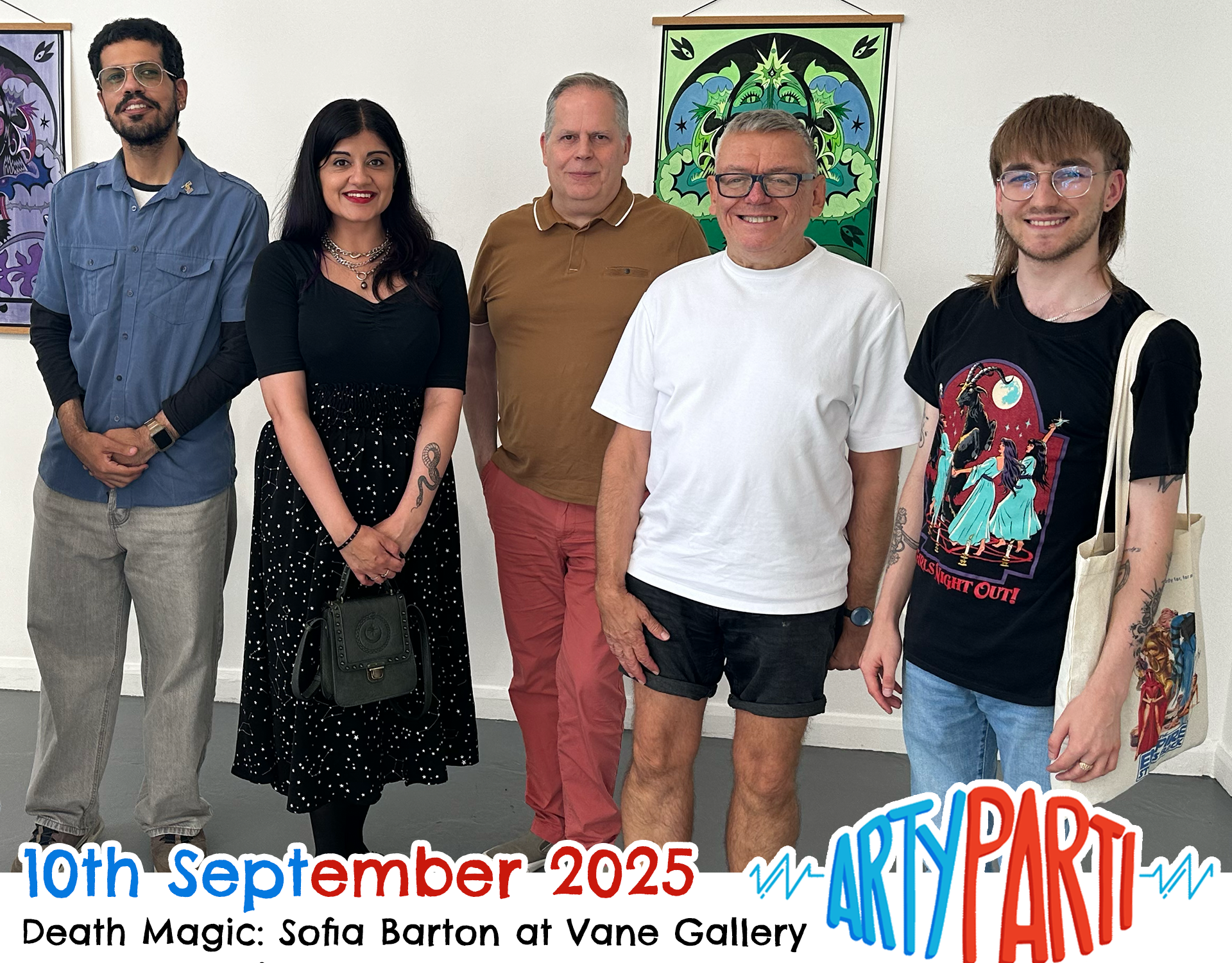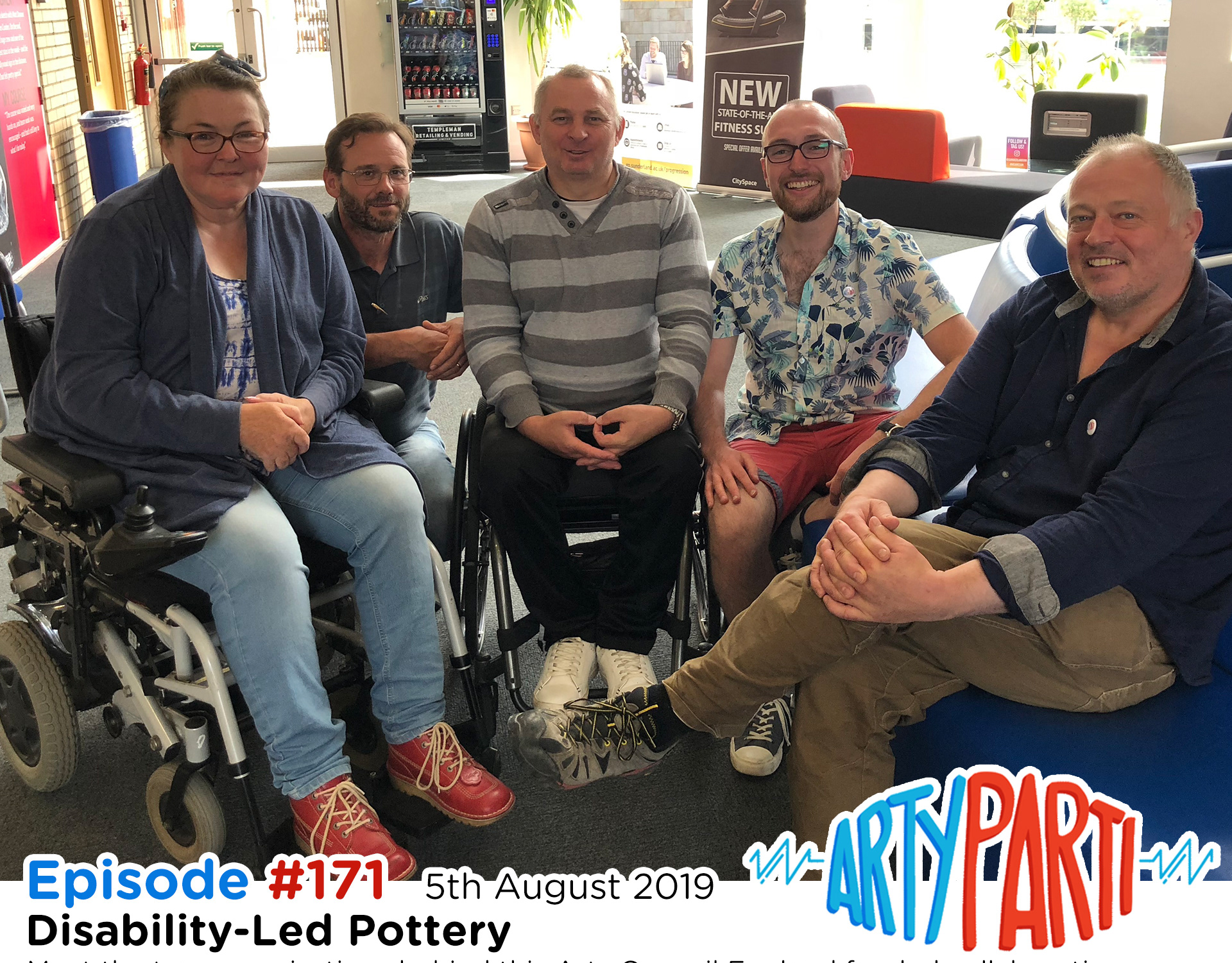JAY SYKES [00:09:12] I love the analogy of painting with colours, but in the way that you're exploring sound. It's like you're using different paints.
JAY SYKES [00:09:22] But the paints are made not of of colour, not of material. Well, they're made of digital.
ODETTE JOHNSON [00:09:29] It is. It's digital sound waves. It's digital information, obviously, it is. Through the years, I've developed a weird knack of listening to things like extractor fans. And, you know, nee naw nee naw, like we all do with, you know, you hear from sirens. And the nee naw nee naw for sirens ends up in my mind as being a screaming banshee, which is something that I've created, which hopefully will be out at some time. So it's looking at the world... I look at it visually. I mean, this is what we talked about, wasn't it? We could have talk for ages when you did your piece. LEWIS HARROWER [00:10:04] Yeah.
ODETTE JOHNSON [00:10:04] Because.. I look at the world visually, but at the same time I hear it, I can hear things. It's a sort of a synesthesia, but it's not. It's a strange combination where I can see something and it moves me. And I think "oh, I really want to write something about that". And then I might walk down the road and hear something clang, bang, whatever, and out comes the sound recorder, and I'll try and record it as quickly as possible. Or I use a lot of free sounds that are out there, or other people's sounds - I ask them "oh, you've recorded such and such, do you think I can use that?" And people are very, very generous. And they'll go "yeah, sure, fine." Not really realising what I might do to it at the end, or what it might turn out like. But eventually I create these pictures - and that's what they are to me. It is like being an artist. It is an artist in sound. Yeah, and hopefully people listen to what I've created and will go "oh, yeah, that does sound like a wasp." I mean, hopefully, you know, does sound like the idea of what it is. Yeah. LEWIS HARROWER [00:11:12] For me as well, like, when I'm listening to the pieces you've made as well, you can hear the picture being created in your mind as well, as it goes along. It develops, and you're sort of "okay, that's that, and that's that"... It's like if you go on YouTube and you can watch, like, an artist pain and it's like sped up, kind of thing, that's what I'm picturing in my mind.
ODETTE JOHNSON [00:11:36] That's brilliant. It's also brilliant, though, for me as well if, for example, people have come up to me in the past and have said.. You know, I've written a piece and it might have been about global warming, for example, and somebody said to me, "oh, that piece really moved me, but I didn't see that, I saw..." And it was something completely different. And I think, "fine, that is great". I might think what it might be - in my idea it's going to be whatever it is - but if you imagine it to be something completely different, then at least you're taking something from that piece of art, rather than just leaving it and discarding it and things. At least you've gained something from it. And I think sound can really do that. It's not explored enough, in my view, as an art, as a piece of art in itself. You know, you hear the radio, you get lots of Muzak. You listen to all sorts of podcasts, or whatever it might be. We're surrounded by sound, but we don't really see it as an art form. And that for me is what I've moved more in towards looking at - sound as an art form, and what you can do. That you can put a painting on a wall, and, for me, you can also put a piece of sound art or a sound picture on the wall. That's eventually what I would like to do, is to have my pieces in some format in a gallery where you can go and see my artwork, and also hear the artwork, because they're so integral to each other. (LAUGHS) LEWIS HARROWER [00:13:06] That would be really, really great. I've actually seen recently, like in a museum, they have a display and it's like a picture of a person. And you can go up to the stand, and there's two, like, a headphone on each side of it. One for one person, one for the other. And they're magnetically stuck to it. And you can take off, and it'll immediately start playing whatever you want to play. I think that would be a really nice thing to have.
ODETTE JOHNSON [00:13:30] It is. There is an amazing amount of technology out there that enables you to do that, which maybe somebody might help me with one day, or I might move towards. But that would be fantastic. The idea is to have a show where I could actually put this out there as art. So that would be a big move for me anyway. JAY SYKES [00:13:49] I definitely hope that's in you in your future, Odette. Then there was someone on ArtyParti two weeks ago called Laura Jones, and she again does art and sound, and sound and art. Her work is currently on exhibition in the National Glass Centre as part of the MA Mini show. She did MA Glass and Ceramics. So she made glass sound waves that are 3-D cut so that they are in the form and the shape of the sounds that she has recorded. LEWIS HARROWER [00:14:15] Wow.
JAY SYKES [00:14:15] And you can hold them.
JAY SYKES [00:14:17] So she invites people to put them in their hands.
ODETTE JOHNSON [00:14:20] Gosh, that's fantastic. Because that's linked to how I do things where I look at things. I mean, one of the things I've created was "Pictures". I do a lot of things based on bits of art I see. And I haven't seen the MA show at the moment - it's on my list. So you've beaten me to it and everything. But I'll definitely keep an eye out for that one. In the National Glass Centre, a lot of the glass work is very... You do want to touch it, even though you can't and everything. JAY SYKES [00:14:47] (LAUGHS).
ODETTE JOHNSON [00:14:47] For me, I do, because if I could touch it, I could hear it a bit better. It's a weird thing. But if I touch something, I can actually hear it. So, again, coming back to the sandpaper, or that sound wave that you were talking about, you can actually hear. I can hear all that texture that's on there. And you know what sandpaper sounds like, but what it could actually be created into. And I suppose looking at glass, I love the National Glass Centre. Because I got a lot of the exhibitions, I take photographs, and a lot of it becomes inspiration. So "Pitchers", for example, there was a piece there where there were these glass.. To me they looked like glass pitcher plants. They were pitchers, and they were clear, and they were hanging from the ceiling, and they were filled with water. And I could hear these five pitcher plants trying to entice these little insects into them and everything. And then I created "Pitchers", which is about eight minutes long, where these weird and wonderful glass pitcher plants are in this strange jungle, and I have all these insects. And, "who wins in the end?" basically, using hydrophones. So I used sounds from hydrophones, you know, recording water and making this pitcher, that I imagined this imaginary world. This is the world I live in, folks. JAY SYKES [00:16:04] (CHUCKLES).
ODETTE JOHNSON [00:16:05] Where it's completely imaginary and in sound. Yes. LEWIS HARROWER [00:16:09] I love it as well, and I love hearing the "behind the scenes" as well of how you create - listen to some of your other stuff, and I'm like, "I don't know how that one was made." I'm like, "I wish she'd released like a 2 or 3 minute thing just after it just being like, "oh, this is the inspiration for this one." And I'd be like "ah, okay. I didn't see that come in, that would have been a bit..." But again, maybe if you listened to it first, you'd get your own thoughts and things about where it could come from, which is the creative / artistic side. But, at the same time I get that you might not want to be like, "oh, this is where I got it from", then that might change their view on it, I guess.
ODETTE JOHNSON [00:16:43] I think you need to keep a little bit of secrecy. Do you know what I mean? A bit of magic about what you do, in a way. You know that a painter will use paint of some nature, a medium, or a sculptor will use some medium. But to know everything of how they created something might somehow break that illusion of being an artist. Cause it's a weirder world that you live in when you're an artist. There is an illusion.. If you say to people, they say, "oh, what do you do?" And you go "well, I'm I'm an artist." And they go "a what?". "An Artist." Oh, and then they go, "oh, okay." And they move away quite quickly (CHUCKLES) because they're not sure how to deal with that. If you say you deal with sound as a piece of art, oh dear, that's like... LEWIS HARROWER [00:17:31] (SOFT CHUCKLE).
ODETTE JOHNSON [00:17:31] So there's an element that's great in that, an an element that's not great in that. So I suppose your idea is "I like that", but there's a part of me thinks "yeah, that would spoil some of it." Because if I created a piece that was about, I don't know, apples in a bowl, say. You might hear something completely different and think that it was some sort of octopus at the bottom of the sea or, I don't know. As a producer of sound pieces yourself, I don't know how you feel about that - giving the game away sort of thing. (LAUGHS) LEWIS HARROWER [00:18:04] Because I'm very much involved in the creating side of things, I like to know how things are made, so I draw inspiration from that.
LEWIS HARROWER [00:18:12] And I guess that's partly why I did the documentary feature on you as well - because I wanted to do something a bit more creative. I hadn't done something more experimental up to that point. And I'd see your work as really experimental, and really creative. And I was like, "I want to draw on that and be inspired by that", and use that to advance myself in a way.
ODETTE JOHNSON [00:18:32] You have put such a heavy burden on me there, I can say. (LAUGHS) JAY SYKES [00:18:38] But we all learn from each other, though, as artists, as producers.
JAY SYKES [00:18:41] And just this meeting of both of you at the Solo Arts Audio Cinema event, when you were like, "I must work with Odette, and find out more about Museleon, but behind the scenes... What was it like working with Odette, creating this this piece that we're about to hear? LEWIS HARROWER [00:18:55] Oh, it was really, really amazing. I brought you in twice to talk. I think maybe like the first one was like an hour, and the second one was an hour and a half.
ODETTE JOHNSON [00:19:04] And it could have gone on for hours and hours. LEWIS HARROWER [00:19:06] I could have gone on for so much longer, but time didn't allow. And I needed to make it 14 minutes. I didn't want to go through 30 hours of stuff just for that.
LEWIS HARROWER [00:19:15] But it was really interesting to hear your process, and then to try and find the right bits of that to get across what you do. But I feel like some of the stuff I'm like, "oh, that bit's just for me. I just want to know that. I don't think anybody else would, but I'm really interested in that one piece.".
LEWIS HARROWER [00:19:32] So it was about getting the right balance of questions as well. I really wanted to actually, when I was making it, I really wanted to come along with you and watch you make a piece.
LEWIS HARROWER [00:19:41] But I just I don't think that was possible at the time, because I was really interested just to actually see it happening.
JAY SYKES [00:19:51] It's you and a computer. (LAUGHS)
ODETTE JOHNSON [00:19:53] It's me and a computer, basically, yes. Yes. JAY SYKES [00:19:57] But then it takes, I mean, so many, so many hours.. Manipulating these, in the same way that cutting down those [interviews]... I mean you [Lewis] only had two and a half hours [of interview material], but still cutting that down and working it with the 14 minute structure that you had.. Both of these things take time.
LEWIS HARROWER [00:20:14] Mmhmm.
JAY SYKES [00:20:14] And they need, I mean, for the artistic quality, I mean, you really could.. Just sit like we're doing, just sitting in a room, we're recording it. But then your [sound art, Odette] takes so many hours of editing, and decisions, and storytelling, and manipulation. It's incredible. ODETTE JOHNSON [00:20:30] A certain piece that I did recently took me over 80 hours to do over 80. JAY SYKES [00:20:35] Over 80 hours!
LEWIS HARROWER [00:20:36] Oh my goodness.
JAY SYKES [00:20:37] Whoever made you do that, must be the most... (LAUGHS).
ODETTE JOHNSON [00:20:39] I don't know who he might have been, Jay. It was my fault, really, because I got really into it as well. I could have just, I should have just, made ten seconds worth and it probably would've taken me.. A week to do, or something like that. Because you have to source everything, and then they're all at different formats. So formats, for people out there.. It's the difference between watercolour paints, and oil paints, and acrylics, etc., isn't it? Some people use .MP3s, at different format levels as well. LEWIS HARROWER [00:21:13] Oh no, oh dear.
ODETTE JOHNSON [00:21:13] Oh yes. And then there's people who use .AIFs, and then they use .WAVs. I had to get the sounds, and then you have to then make them "equal" in some respects, and get the sound quality up. And some are recorded on their iPhone in the middle of the desert somewhere, and somebody else has recorded it with a super duper top range whatever it might be - with a boom and all that, like you see, with a sound recordist and things. And you have to get some partiy. And then you have to then create something out of it. You know, think about the subject, think about what you're trying to do here. And then it's all the process and editing for me. I dunno about you. Most people say "I like the creation bit, but then the editing part is.. That's really hard." Because one change you make on one thing alters everything else, doesn't it? LEWIS HARROWER [00:22:01] It can do, yeah. It's really, really difficult. Like the actual cutting down the voices of the bit that I find the hardest part. And then it gets into the bit that I love after that, which is the actual creative process. I go back through it, and sort of figure out "right, how do I make this sound more like what you do?" That was really hard.
LEWIS HARROWER [00:22:20] But really interesting.
JAY SYKES [00:22:21] I sort of work similar, but backwards to you.
LEWIS HARROWER [00:22:25] (CHUCKLES)
JAY SYKES [00:22:25] So I will be cutting as I go, and then layering from beginning to end almost chronologically. And I do it that way rather than cutting and then throwing it together.
LEWIS HARROWER [00:22:35] Right.
JAY SYKES [00:22:35] So I love that we all have different processes of documentary features.
LEWIS HARROWER [00:22:40] (CHUCKLES)
JAY SYKES [00:22:40] But I remember watching one person, and they were doing a different voice or a different sound effect on each channel. And I understand the reasons why, because you'll apply effects maybe to that one channel.
LEWIS HARROWER [00:22:52] Mmhmm.
JAY SYKES [00:22:52] But then it was going down. And down and down. And they weren't going back up.
LEWIS HARROWER [00:22:56] Oh gost.
JAY SYKES [00:22:56] So it was like 50 layers. And I'm like, "just move it". (LAUGHS).
LEWIS HARROWER [00:22:59] (CHUCKLES)
JAY SYKES [00:23:00] But it just became this staircase - sorry, this is really technical - but this staircase in the editing system.
ODETTE JOHNSON [00:23:08] (LAUGHS) Oh dear. I think it's bad enough if I'm dealing with about twelve tracks. JAY SYKES [00:23:12] Right?! (LAUGHS)
ODETTE JOHNSON [00:23:12] Twelve actual lines of bits of information, if you like, or 12 colours, and they all mix together hopefully in the overall picture. I mean I have got some they're much more complicated than that - some which have 24 sounds in them, that come in, out, in... So it's like this maze, and you can't get really lost, can't you, in it? LEWIS HARROWER [00:23:34] I lose pieces of audio if I go past like twelve tracks, like "ohhh". And start hearing things over things, like, "oh, where's that one?".
JAY SYKES [00:23:42] Or when you do an export, so you make the file a "thing", and then you're like, "where does that voice come from?".
LEWIS HARROWER [00:23:44] (LAUGHS).
JAY SYKES [00:23:44] Oh, it's down there! (LAUGHS)
ODETTE JOHNSON [00:23:45] Yes. Oh, that's the worst bit, isn't it? When you think, "yes, I think I've got a nice balance here. I've got a nice balance between the blues and the greens and the yellows." And then a blummin' red comes at you, and you think, "where did that come from?" You know, it's some booming voice that you thought you had right the way down. And you think, "oh, no," so you have to go back again and then re-do it. It's it's a nightmare. LEWIS HARROWER [00:24:13] It happens far too often for me.
JAY SYKES [00:24:17] So in bringing Odette Johnson’s practice to life, we're about to dive into "My Sound World", as it's called. How many hours will this take? LEWIS HARROWER [00:24:25] Oh, gosh.
JAY SYKES [00:24:26] (LAUGHS)
LEWIS HARROWER [00:24:29] Many.
JAY SYKES [00:24:29] Many.
LEWIS HARROWER [00:24:30] Many. Many hours. I don't know a strict number, but many, many hours.
JAY SYKES [00:24:36] And if you'd like to listen along and have any questions for either Lewis Harrower, the documentary producer, or for Odette Johnson, the sound artist known as Museleon, then please do tweet as in: We are at @ArtyParti. That is @ Arty with a "y", party with an "i". Why I. SOUNDS [00:24:56] ("MY SOUND WORLD" BY LEWIS HARROWER)
